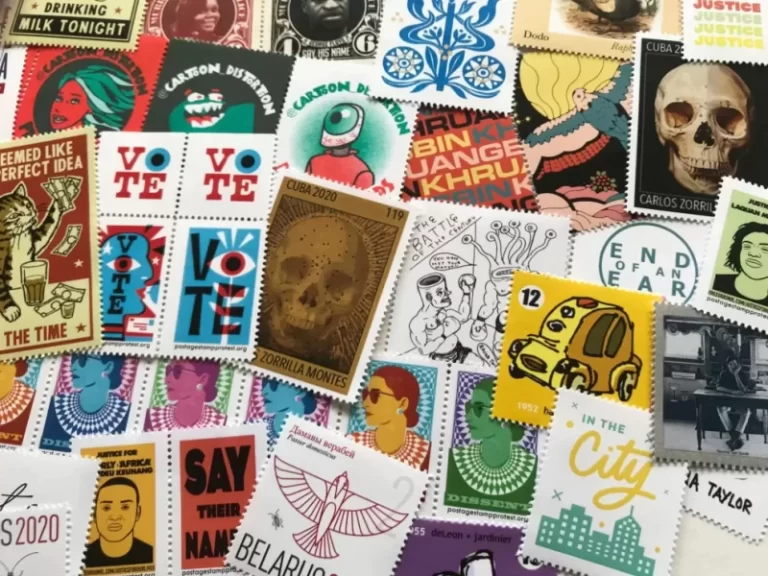Soaking
Now that you have gathered some stamps from envelopes that came through the mail how are you going to get the stamps off the envelopes? First you should decide if you really want to remove the stamp. Perhaps there is a special cancel or image on the envelope that appeals to you — in this case put the entire envelope in your album. But if you want to remove the stamps from envelopes, the best way is to soak them. Soaking most stamps is fast and easy. NOTE that many U.S. self-adhesives issued in 2004 or later will not soak easily, if at all. Read this helpful article for removing self-adhesive stamps.
- You first should go through and pull out any brightly covered envelopes (such as red or green) and lay these aside to soak separately as the color may bleed.
- Cut off the upper right-hand corner of the envelopes; be careful not to cut the stamps.
- Place them, stamp side up, in a few inches of lukewarm water in a shallow bowl (make sure the water is not HOT as it may damage the stamps). Don’t soak too many at one time, they should have room to float. And, if you are soaking a lot of stamps be sure to change your water after two or three batches.
- After a few minutes, you will notice the stamps begin to float free form the paper. Remove each stamp from the water. If you use tongs, be careful as a wet stamp is more easily damaged than a dry one. Be patient and do not try to pull the stamp free from the paper before it is ready as you may end up tearing it.
- Rinse the back of the stamp gently in fresh water to make sure all the gum is off. You may wish to place the stamps between two paper towels and put a book on top of them to prevent curling. Leave the stamps to dry overnight.
Sorting Stamps
Your stamps are soaked and dried, what is your next move? Before you mount them in your album you need to put them in some kind of order.
- Depending on the type of collection you are putting together you may want to first sort your stamps by country or by topic. Or, you may decide to sort them by the service which the stamp was meant to provide such as airmail stamps, special delivery stamps, postage due, parcel post or revenue stamps.
- During your sorting process remove any badly damaged stamps, unless of course it is valuable and may be hard to replace.
- If you have more than one copy of a particular stamp, select the best one (well centered and lightly canceled). The duplicates can be saved for trading.
- Sorting is a never-ending job as you will always be adding to your collection. And remember, there is no right or wrong way to collect.
- Store your stamps in glassine envelopes until you are ready to put them in a an album or stockbook
Mounting Stamps
Collectors often store stamps in albums. To attach the stamps to album pages, you may use peelable hinges or stamp mounts. Unlike tape or glue (which you should never use) hinges and mounts provide a way to remove the stamp from your album page without damaging it. So, should you hinge or mount? That’s another choice that is up to you.
Hinges are small, thin, folded pieces of translucent paper or plastic with special gum on the once side. To use a hinge, moisten the short end of the hinge lightly and press it to the back of the stamp, placing the fold about 1/8 inch from the top of the stamp. Then lightly moisten the larger portion of the hinge and attach it to your album page pressing down to secure it. Many collectors prefer to use mounts for mint stamps, as part of the gum will come off of the stamp if the hinge is removed.
Mounts are small, clear plastic sleeves. To use a mount, you simply insert the entire stamp into the mount, lightly moisten the back of the mount, and attach them to your album pages. Mounts are a little more expensive than hinges, but they protect stamps from air, dirt, and moisture.
Hinges and mounts can be purchased from local stamp dealers. To find a Stamp Dealer in your area, look in your yellow pages or visit the On-line APS Dealer Directory where you can search in your state or city. Here are YouTube videos to help you with How to Mount Postage Stamps and How to Hinge Mount Postage Stamps

